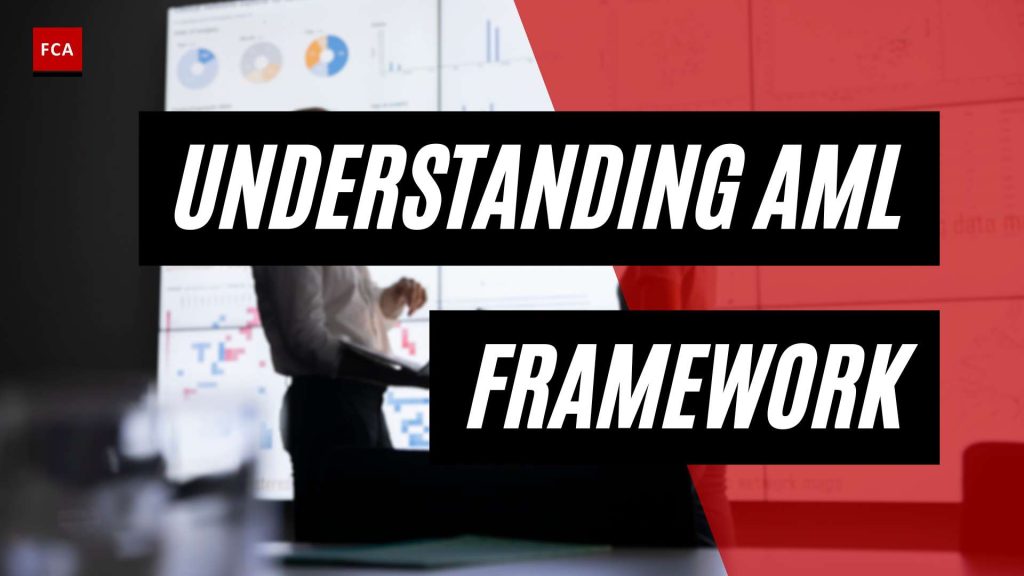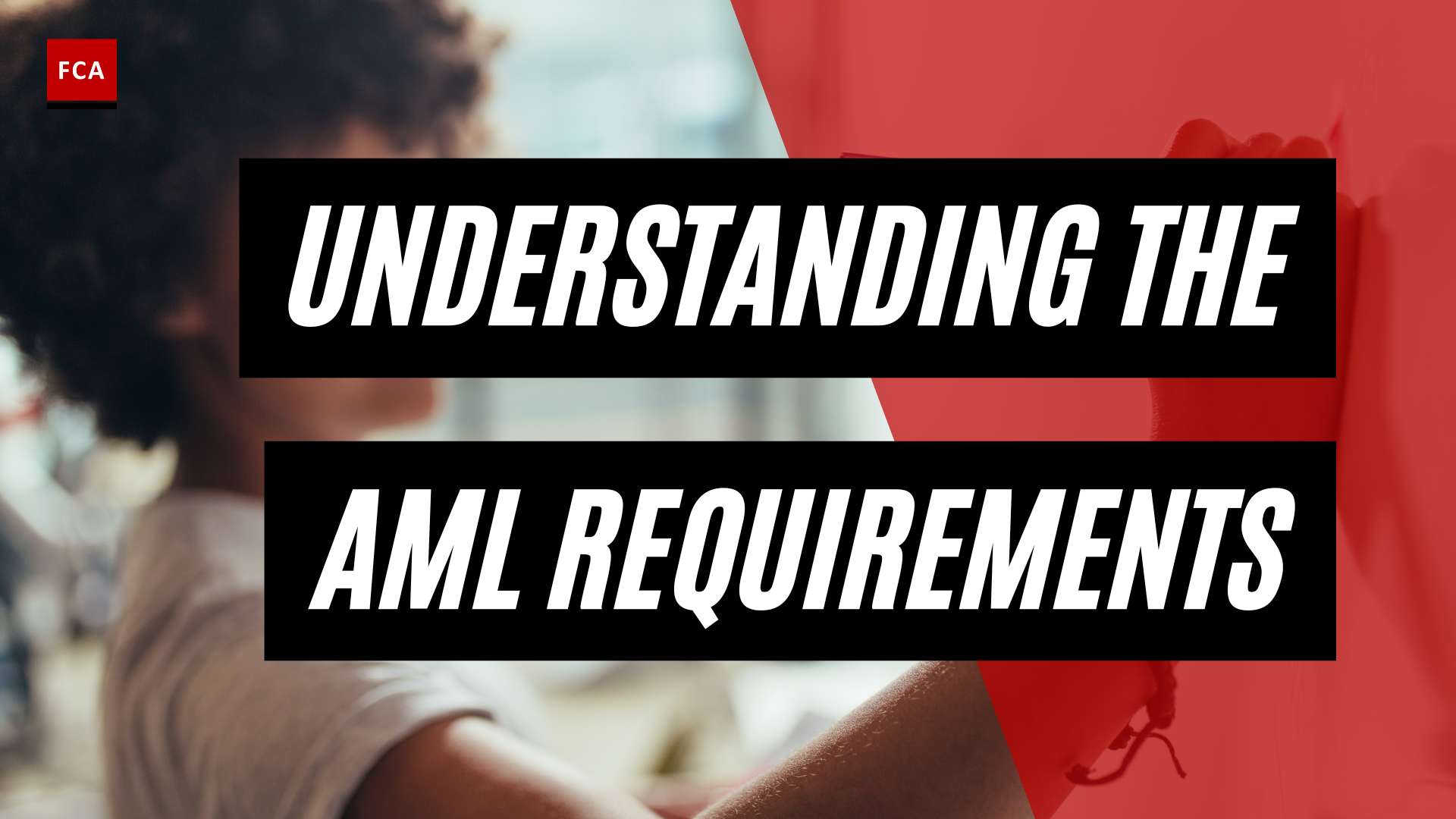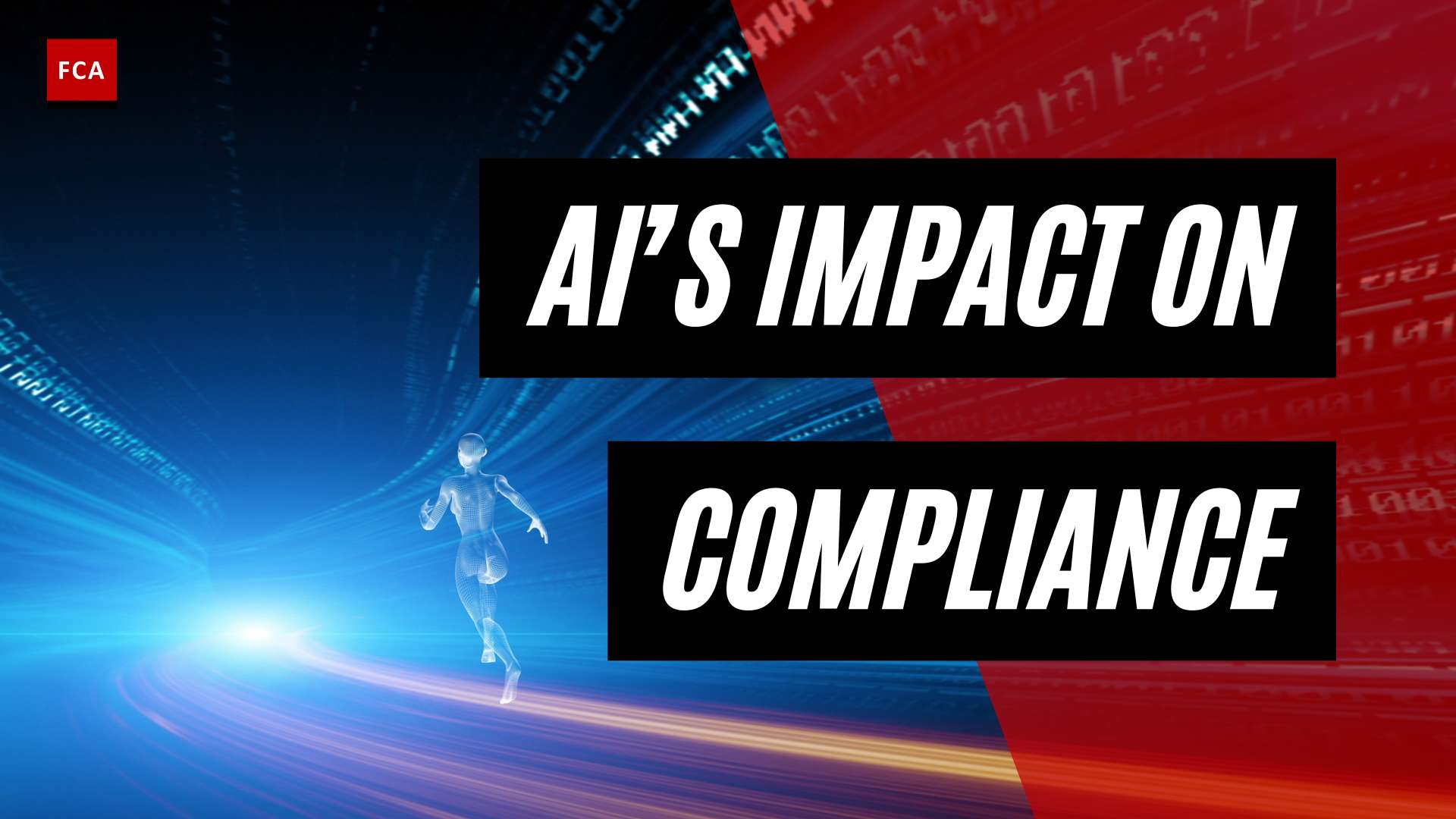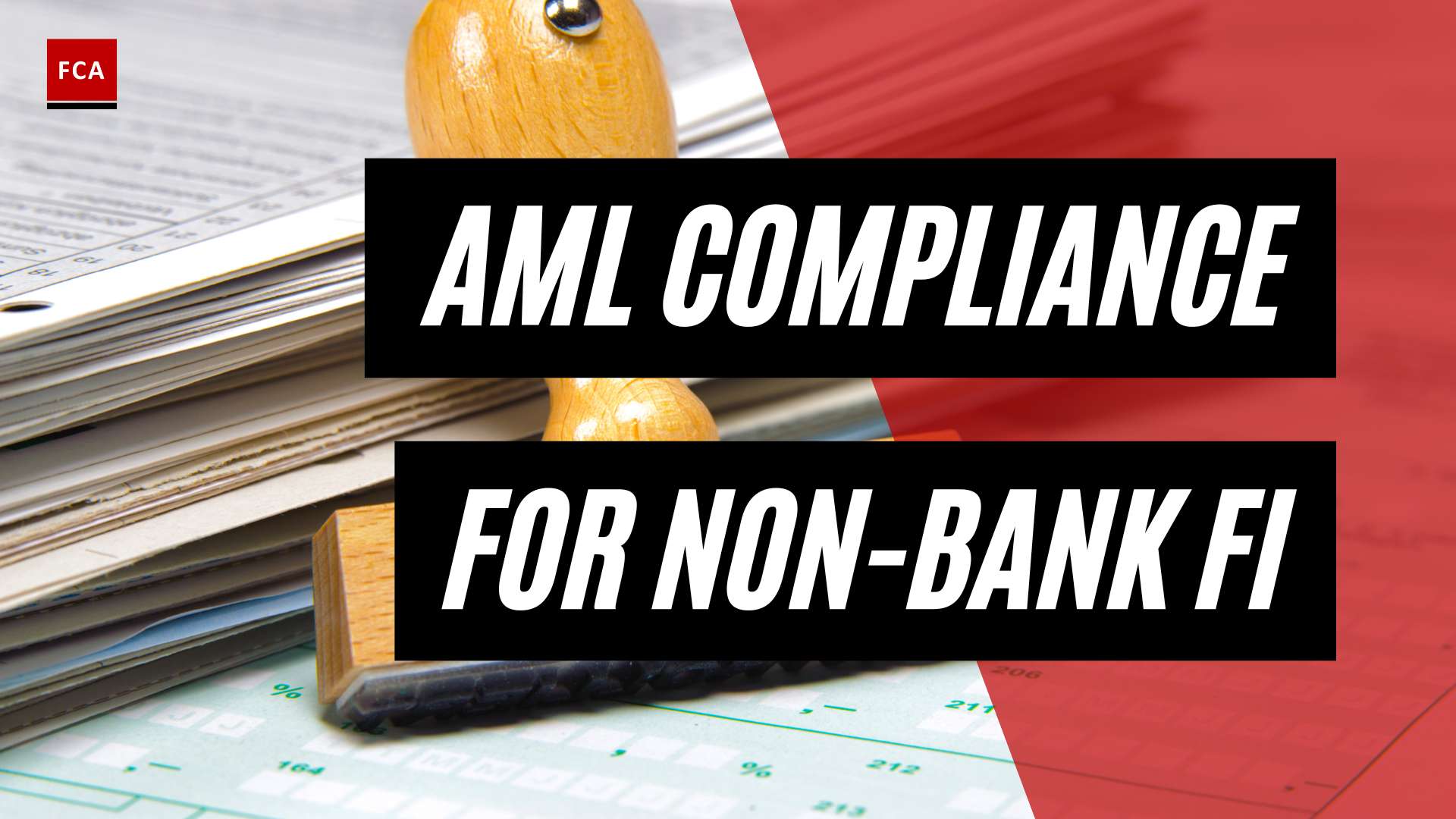Understanding AML Program Framework
In the realm of anti-money laundering (AML) compliance, having a well-defined AML program framework is of utmost importance. A robust framework ensures that financial institutions can effectively detect, prevent, and report instances of money laundering and terrorist financing, thereby safeguarding their operations and the integrity of the global financial system.
Importance of AML Compliance Programs
AML compliance programs play a vital role in the fight against financial crimes such as money laundering, tax evasion, fraud, and terrorist financing. Financial institutions are required to establish strong internal controls and regulatory understanding to ensure compliance with AML regulations. Through comprehensive policies, controls, and procedures, these programs enable the identification and reporting of suspicious activities to the appropriate authorities.
By implementing an AML compliance program, financial institutions demonstrate their commitment to combating financial crimes and protecting themselves from legal consequences and reputational damage. Additionally, an effective program helps foster trust among customers and stakeholders, as it signifies a dedication to maintaining a secure financial environment.
Components of an AML Program Framework
An AML program framework consists of various components that work together to form a comprehensive compliance program tailored to the specific risks, size, and complexity of the institution. These components include:
1. Risk Assessment and Analysis
A thorough risk assessment is a crucial starting point for an AML compliance program. It involves identifying and evaluating the risks associated with the institution’s customers, products, services, and geographic locations. By understanding these risks, institutions can allocate resources effectively, implement appropriate controls, and prioritize their AML efforts.
2. Policies, Controls, and Procedures
The development and implementation of comprehensive policies, controls, and procedures form the backbone of an AML program. These guidelines outline the institution’s commitment to AML compliance and provide a framework for employees to follow. Such policies cover areas such as customer due diligence, transaction monitoring, recordkeeping, and reporting suspicious activities.
3. Customer Due Diligence (CDD)
Customer due diligence is a critical aspect of an AML program. It involves verifying the identities of customers, assessing their risk profiles, and understanding the nature and purpose of the customer relationship. By implementing effective CDD measures, institutions can identify and mitigate potential money laundering risks associated with their customers.
To ensure compliance with AML regulations, financial institutions need to align their policies, internal operations, and monitoring processes with the AML program framework. This alignment helps establish a robust system that meets compliance standards and actively combats financial crimes.
For guidance on developing and implementing an AML program, financial institutions can refer to AML policy templates and AML policy and procedures. These resources provide a foundation for creating a strong AML framework that aligns with regulatory requirements.
As financial institutions continually evaluate and improve their AML compliance programs, they should conduct regular AML policy reviews and consider independent audits and reviews to ensure the program’s effectiveness and identify areas for enhancement.
By embracing the key components of an AML program framework and continuously adapting to evolving AML regulations, financial institutions can maintain compliance, protect their operations, and contribute to the global effort against financial crimes.
Designing an Effective AML Policy
When it comes to combating money laundering and ensuring compliance with anti-money laundering regulations, financial institutions need to establish an effective AML policy. An AML policy serves as the foundation of an institution’s AML program framework, outlining the necessary measures to detect, prevent, and report instances of money laundering and terrorist financing.
Risk Assessment and Analysis
Before designing an AML policy, conducting a thorough risk assessment and analysis is crucial. This process involves evaluating the risks associated with the institution’s customer base, products, services, and geographic locations. By identifying and understanding these risks, institutions can tailor their AML policies and procedures to effectively mitigate them. It’s essential to regularly review and update the risk assessment to stay ahead of evolving money laundering methods and regulatory requirements.
Policies, Controls, and Procedures
The AML policy should include a comprehensive set of written policies, controls, and procedures that clearly define the institution’s approach to AML compliance. These policies should outline the institution’s commitment to AML compliance, the responsibilities of employees, and the processes for customer due diligence (CDD), transaction monitoring, and reporting suspicious activities. The AML policy and procedures should align with applicable laws, regulations, and industry best practices.
To ensure the effectiveness and practicality of the policies, controls, and procedures, institutions should consider factors such as the institution’s size, complexity, and the nature of its business activities. It’s crucial to strike a balance between comprehensive safeguards and operational efficiency.
Customer Due Diligence (CDD)
Customer Due Diligence (CDD) is a vital component of an AML policy. It involves assessing the risk profile of customers to identify and verify their identity, understand their business activities, and monitor their transactions. The CDD process should vary based on the risk level of each customer, with enhanced due diligence measures applied to high-risk customers, such as politically exposed persons (PEPs) and those involved in complex transactions.
In addition to initial due diligence, ongoing monitoring of customer activity is necessary to detect and report suspicious transactions. This includes implementing transaction monitoring systems capable of identifying patterns and anomalies that may indicate money laundering or other illicit activities.
By designing an effective AML policy that encompasses risk assessment and analysis, policies, controls, and procedures, as well as customer due diligence (CDD), financial institutions can establish a robust framework to combat money laundering and meet regulatory requirements. Implementing and adhering to such a policy helps protect the institution from legal and reputational risks while contributing to the integrity of the global financial ecosystem.
For more information on AML policy development, implementation, and review, refer to our articles on aml policy development, aml policy implementation, and aml policy review.
Implementing AML Controls and Procedures
To effectively combat money laundering and uphold regulatory compliance, implementing robust controls and procedures is essential. In the AML program framework, three key elements play a crucial role in this implementation: transaction monitoring and reporting, suspicious activity reporting (SAR), and ongoing monitoring and analysis.
Transaction Monitoring and Reporting
Transaction monitoring and reporting is a fundamental component of AML compliance. Financial institutions utilize specialized systems and software to monitor customer transactions in real-time, identifying any suspicious activity that may indicate money laundering or terrorist financing. These systems analyze various parameters, such as transaction amounts, frequency, and patterns, to detect anomalies and flag potential risks.
By continuously monitoring transactions, financial institutions can promptly identify and report suspicious activities to the appropriate authorities. Timely reporting contributes to the collective efforts in combating money laundering and helps maintain the integrity of the financial ecosystem. It is important to note that the effectiveness of transaction monitoring relies on the quality of data inputs, the sophistication of monitoring systems, and the expertise of compliance professionals.
Suspicious Activity Reporting (SAR)
The process of suspicious activity reporting (SAR) is a crucial part of AML controls and procedures. When financial institutions detect transactions or activities that raise suspicions of money laundering or terrorist financing, they are required to file a SAR with the relevant regulatory authorities. SARs provide detailed information about the suspicious activity, including the individuals or entities involved, the nature of the activity, and any supporting evidence.
Filing SARs is a critical obligation for financial institutions, helping to initiate investigations and enabling law enforcement agencies to take appropriate actions. The content and format of SARs may vary depending on jurisdictional requirements, but they generally follow standardized templates to ensure consistent reporting. Implementing efficient SAR processes and training employees on recognizing and reporting suspicious activities are crucial for effective AML compliance.
Ongoing Monitoring and Analysis
Continuous monitoring and analysis of customer behavior is an integral part of AML controls and procedures. Financial institutions should establish processes to regularly review and update customer risk profiles. By conducting ongoing monitoring, institutions can detect changes in customer behavior or transaction patterns that may indicate potential money laundering.
Ongoing monitoring involves reviewing customer accounts, transactions, and other relevant data to assess the level of risk associated with each customer. High-risk customers, such as politically exposed persons (PEPs) or those engaged in high-value transactions, require enhanced due diligence and closer scrutiny. By conducting regular reviews and analysis, financial institutions can identify and mitigate emerging risks promptly.
Ensuring the effectiveness of ongoing monitoring requires a combination of technological solutions and skilled personnel. Advanced AML technology solutions, such as transaction monitoring systems, leverage machine learning algorithms and data analytics to analyze vast amounts of data efficiently. These solutions help identify patterns and anomalies that may indicate suspicious activity, enabling timely action to be taken.
By implementing robust transaction monitoring and reporting mechanisms, facilitating SAR filing processes, and conducting ongoing monitoring and analysis, financial institutions can strengthen their AML controls and procedures. These measures contribute to the fight against money laundering and terrorist financing, protecting the integrity of the financial system and promoting regulatory compliance.
For more information on AML program frameworks, refer to our articles on aml policy and procedures and aml policy implementation.
Role of Technology in AML Compliance
Technology plays a crucial role in enhancing Anti-Money Laundering (AML) compliance efforts by providing innovative solutions that can automate processes, analyze vast amounts of data, and detect fraudulent activities in real-time. This section will explore the different technology solutions that contribute to effective AML compliance: technology solutions for AML, transaction monitoring systems, and RegTech and automation.
Technology Solutions for AML
AML compliance has been revolutionized by technology, providing advanced solutions to combat money laundering and financial crimes. These technology solutions offer a range of capabilities, including data analysis, risk assessment, customer due diligence, and transaction monitoring.
By leveraging data analytics and machine learning algorithms, technology solutions can analyze large volumes of data and identify patterns and anomalies that may indicate suspicious transactions. This improves the accuracy of risk assessments and reduces false positives, enabling compliance professionals to focus on investigating genuine risks. According to a LinkedIn article, machine learning algorithms have proven to be effective in detecting suspicious activities and enhancing risk assessments.
Blockchain technology is another powerful tool in AML compliance. It provides a secure and transparent platform for financial transactions, making it easier to trace fund movements and identify suspicious activities. The use of blockchain enhances transparency and reduces the risk of fraud, making it an emerging technology in the fight against money laundering and financial crimes (LinkedIn).
Transaction Monitoring Systems
Transaction monitoring systems are a critical component of AML compliance. These systems enable businesses to monitor financial transactions in real-time and identify suspicious activity. Modern AML technology solutions leverage machine learning algorithms to analyze data and detect patterns indicating potential money laundering activities. By continuously monitoring transactions, businesses can promptly detect and report suspicious activities, helping to prevent money laundering.
Transaction monitoring systems utilize various parameters and rules to flag transactions that deviate from normal patterns or exhibit red flags associated with money laundering. These systems can detect unusual transaction amounts, frequency, and patterns across multiple accounts. By implementing effective transaction monitoring systems, businesses can enhance their ability to identify and report suspicious activities to regulatory authorities.
RegTech and Automation
Regulatory Technology (RegTech) solutions have emerged as game-changers in AML compliance. These solutions automate compliance processes, reducing the burden of manual tasks and improving efficiency. RegTech solutions can streamline customer due diligence processes by automating data collection and verification, enabling businesses to conduct checks more efficiently. Some solutions offer risk assessment tools that generate risk scores based on customer data, facilitating tailored monitoring efforts.
Automation also plays a significant role in regulatory reporting, a crucial aspect of AML compliance. RegTech solutions can automate the preparation and submission of reports, reducing the time and resources required for compliance. By leveraging RegTech and automation, businesses can enhance their AML compliance programs, ensuring regulatory requirements are met effectively and efficiently.
In summary, technology solutions play a vital role in AML compliance by providing innovative tools for risk assessment, transaction monitoring, and regulatory reporting. These solutions leverage data analytics, machine learning, blockchain, and automation to enhance the speed, accuracy, and efficiency of AML compliance efforts. By embracing technology, businesses can strengthen their AML programs and contribute to a more robust global financial system.
Challenges in AML Program Frameworks
Implementing an effective AML program framework comes with its fair share of challenges. Financial institutions and organizations face several obstacles in their efforts to combat money laundering and meet regulatory requirements. In this section, we will explore three key challenges often encountered in AML program frameworks: the complexity of money laundering methods, the lack of cooperation and information sharing, and data and technology resource limitations.
Complexity of Money Laundering Methods
One significant challenge in AML program frameworks is the ever-evolving complexity of money laundering methods. Criminals are constantly finding new ways to launder money, utilizing techniques such as shell companies, offshore accounts, and digital currencies to conceal the origins of funds. Sophisticated transactions, including layering and integration, are employed to make it challenging for financial institutions to trace the source of funds (Sanction Scanner).
To effectively address this challenge, organizations must continuously stay updated on emerging money laundering trends and techniques. They should enhance their risk assessment processes and leverage advanced technologies, such as data analytics and machine learning, to identify suspicious patterns and anomalies. Regular training and awareness programs for employees are also crucial in ensuring they are equipped to recognize suspicious activities and report them appropriately.
Lack of Cooperation and Information Sharing
Another significant challenge in AML program frameworks is the lack of cooperation and information sharing between financial institutions and regulatory authorities. Concerns about legal liability and reputational risks often hinder the sharing of critical information. This lack of collaboration can impede effective AML efforts, as timely access to relevant information is vital for detecting and preventing money laundering activities (Sanction Scanner).
To overcome this challenge, it is essential to promote a culture of collaboration and resource sharing among financial institutions, regulatory authorities, and other stakeholders. Establishing effective communication channels and frameworks for sharing information, while ensuring the protection of sensitive data, can enhance AML program effectiveness. Encouraging public-private partnerships and fostering a collective commitment to combating money laundering can lead to improved outcomes in identifying and preventing illicit financial activities.
Data and Technology Resource Limitations
AML program frameworks can also face challenges due to data and technology resource limitations. Some financial institutions, particularly smaller ones, may struggle with insufficient access to customer and transaction data, as well as the absence of necessary analytics tools. These limitations can hinder their ability to effectively detect and prevent money laundering activities (Sanction Scanner).
To address this challenge, organizations should invest in robust data management systems and technologies that enable efficient data collection, storage, and analysis. Implementing transaction monitoring systems and leveraging advanced analytics and machine learning capabilities can enhance the detection of suspicious activities. Additionally, financial institutions should explore collaborations with technology providers and consider adopting RegTech solutions to streamline compliance processes and overcome resource limitations.
By recognizing and addressing these challenges within the AML program framework, organizations can strengthen their anti-money laundering efforts. Collaboration, continuous learning, and leveraging advanced technologies are key to staying ahead of money laundering threats and ensuring compliance with regulatory requirements.
Enhancing AML Compliance Programs
To ensure the effectiveness of Anti-Money Laundering (AML) compliance programs, financial institutions need to continuously enhance their frameworks. This section explores three key aspects of enhancing AML compliance programs: training and awareness activities, independent audits and reviews, and collaboration and resource sharing.
Training and Awareness Activities
Training and awareness activities play a vital role in enhancing AML compliance programs. It is crucial for employees at all levels of the organization to be well-informed about the latest AML regulations, best practices, and emerging trends. By providing comprehensive training, financial institutions can empower their employees to identify and report suspicious activities effectively.
Training programs should cover topics such as recognizing red flags, conducting customer due diligence (CDD), and understanding the reporting requirements for suspicious transactions. Regular training sessions and refresher courses should be conducted to keep employees up to date with evolving AML regulations and emerging money laundering techniques.
In addition to training, creating a culture of awareness is essential. This can be achieved through internal communications, newsletters, and regular reminders about the importance of AML compliance. By fostering a culture that prioritizes AML compliance, financial institutions can ensure that all employees remain vigilant and actively contribute to the effectiveness of the AML program.
Independent Audits and Reviews
Independent audits and reviews are a critical component of enhancing AML compliance programs. Financial institutions are advised to conduct periodic audits by third-party organizations to evaluate the effectiveness of their AML programs in meeting compliance standards. These audits help identify any gaps, weaknesses, or areas for improvement in the AML program.
The frequency of audits may vary based on the institution’s risk profile, but a general recommendation is to conduct audits every 12-18 months, or more frequently in high-risk areas (Flagright). Independent audits provide an objective assessment of the AML program’s effectiveness and help identify areas where additional controls or enhancements may be needed.
Furthermore, conducting internal reviews and assessments on a regular basis can help financial institutions identify and address any shortcomings in their AML compliance program. This self-assessment process allows organizations to proactively improve their AML frameworks and stay ahead of regulatory requirements.
Collaboration and Resource Sharing
Collaboration and resource sharing among financial institutions can significantly enhance AML compliance programs. By sharing insights, best practices, and lessons learned, institutions can benefit from each other’s experiences and improve their own AML frameworks.
Collaboration can take various forms, such as participating in industry forums, working groups, or information-sharing networks. These platforms provide opportunities for financial institutions to discuss emerging trends, share intelligence on money laundering methods, and exchange ideas on effective AML practices.
Furthermore, financial institutions can collaborate with regulatory bodies, law enforcement agencies, and other stakeholders to combat money laundering collectively. By working together, institutions can contribute to a more robust and coordinated response to financial crimes.
Resource sharing is another aspect of collaboration that can enhance AML compliance programs. This includes sharing tools, technologies, and resources that can improve the effectiveness and efficiency of AML frameworks. By leveraging shared resources, financial institutions can overcome resource limitations and enhance their ability to detect and prevent money laundering activities.
By prioritizing training and awareness activities, conducting independent audits and reviews, and fostering collaboration and resource sharing, financial institutions can continuously enhance their AML compliance programs. These efforts contribute to the integrity of the global financial ecosystem and help protect institutions from legal and reputational consequences (KYC2020).
Future Trends in AML Compliance
As technology continues to advance, the world of Anti-Money Laundering (AML) compliance is evolving to keep up with the ever-changing landscape of financial crime. In this section, we will explore three key future trends in AML compliance: data analytics and machine learning, blockchain technology, and biometrics and identity verification.
Data Analytics and Machine Learning
Technology has revolutionized AML compliance by providing innovative solutions that can automate processes, analyze vast amounts of data, and detect fraudulent activities in real-time (LinkedIn). One significant trend in AML compliance technology is the use of data analytics and machine learning. Machine learning algorithms have the ability to analyze large volumes of data to identify patterns and detect suspicious transactions, improving the accuracy of risk assessments and reducing false positives (LinkedIn).
By leveraging data analytics and machine learning, financial institutions can enhance their AML programs by:
- Identifying complex money laundering patterns that may go unnoticed by traditional rule-based systems.
- Improving the accuracy of risk assessments by analyzing customer behavior and transaction history.
- Enhancing transaction monitoring capabilities and reducing false positives.
- Detecting emerging trends and adapting AML strategies accordingly.
Blockchain Technology in AML
Blockchain technology is being utilized to enhance AML compliance by providing a secure and transparent platform for financial transactions, reducing the risk of fraud and improving traceability (LinkedIn). With blockchain, each transaction is recorded in a decentralized and immutable ledger, making it difficult for criminals to manipulate or hide illicit activities.
The use of blockchain technology in AML compliance offers several benefits, including:
- Increased transparency and visibility of financial transactions, enabling regulators and law enforcement agencies to monitor and investigate suspicious activities more effectively.
- Enhanced traceability of funds, making it easier to identify the source and destination of funds involved in money laundering schemes.
- Improved customer due diligence by securely storing and verifying identity information on the blockchain.
- Streamlined information sharing and collaboration among financial institutions, regulators, and other stakeholders.
Biometrics and Identity Verification
Biometrics, such as facial recognition or fingerprint scanning, is emerging as a technology transforming AML compliance. Biometric authentication provides a secure and efficient way to verify the identity of customers, which can help prevent identity theft and fraud (LinkedIn). By incorporating biometrics into AML processes, financial institutions can enhance their customer due diligence efforts and strengthen the overall security of their systems.
The benefits of using biometrics and identity verification in AML compliance include:
- Enhanced accuracy in verifying the identity of customers, reducing the risk of impersonation and identity fraud.
- Streamlined onboarding processes, improving the customer experience while ensuring compliance with regulatory requirements.
- Improved monitoring of customer transactions by linking biometric data to account activity, allowing for more robust identity verification during ongoing monitoring.
- Increased security and fraud prevention by adding an additional layer of authentication beyond traditional methods.
As technology continues to advance, these future trends in AML compliance present opportunities for financial institutions to enhance their AML programs, improve detection capabilities, and stay ahead of evolving financial crime risks. By embracing data analytics and machine learning, blockchain technology, and biometrics, organizations can strengthen their defenses against money laundering and ensure compliance with regulatory requirements.








